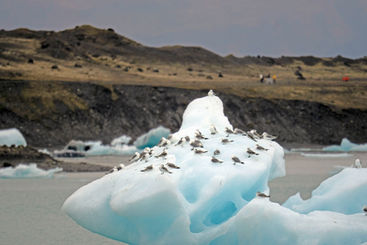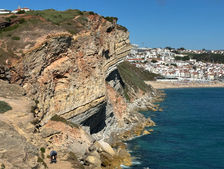CLOCK
To evolve from apes 7 hrs
Homo Sapiens so far 10mins
Human history 30secs
1000 years 3secs
I year 3msec
ICEland, IRELAND & PORTUGAL 2025


.png)
Iceland - June for long days 11 night trip
Rekjavik 3 nights
Thingvellir NP - plate boundary running SW-NE , morning sun
Kerig Crater, morning or evening
To Akureyri - 4 hrs from Rekjavik
Textile museum Blonduos
To Myvan 1.5hrs direct
Godafoss waterfall,
Myvatn birding;
Dettifoss Waterfall.
Tjornes Penninula no puffins,
Husavik Village, evening 2-3 hr whale watching stormed out
To Hofn 6.5 hrs
Breiddalvik Reindeer,
Kyacking on Heinabergslon with stoned Greek "local" guide
Jokulsarlon is the famous glacial lagoon with Diamond beach opposite
To Viki Myrdal 2 hrs
Fjadrargljufur Canyon
Dyrholaey Arch no Puffins
Westland Island to see Puffins stormed out
To Rekjyavik
Skogafoss
Rekjyavik 2 night

IRELAND
To Dublin
National Museum 2 locations; Collins Barrack, N of Liffey for fabric and Kildare St near Merriam Square for Viking gold.
To Galway City
Galway Cathederal
Cliffs of Mohr
Connemara Peninsula.

PORTUGAL 10 nights
To Lisbon
São Jorge Castle ruins
Museum of Maritime in Alges subdivision - the majestic Royal Bergantine, commissioned to be built in 1780.
Sintra Moorish castle in Sintra train ride on CP Sintra line. Dinner with Sammy and Josh lives in Santa Isabel
To Algarve
Coast & Sagres Fortress & Museum (Henry the Navigator) in Sagres
Silves old town. meet James and Marie Kay
Faro, sea life with Ocean Vibes.
Sao Lourenco Bird Hide and walk.
To Nazerre
Beach and wave overlook
To Porto via Aviero
Historic Centre of Porto, river cruise
Villa de Conte for closed Museum of lace
To Madrid
Visit Segovia, tour with Tracey, Manuel Jr and James
Lunch with Manuel Sr and Sol
Iceland
In geological terms, Iceland is a young island. It started to form in the Miocene era about 20 million years ago from a series of volcanic eruptions on the Mid-Atlantic Ridge, where it lies between the North American and Eurasian plates. These plates spread at a rate of approximately 2.5 centimeters per year.[3] This elevated portion of the ridge is known as the Reykjanes Ridge. The volcanic activity is attributed to a hotspot, the Iceland hotspot, which in turn lies over a mantle plume (the Iceland Plume), a column of anomalously hot rock in the Earth's mantle which is likely to be partly responsible for the island's creation and continued existence. For comparison, it is estimated that other volcanic islands, such as the Faroe Islands have existed for about 55 million years, [4] the Azores (on the same ridge) about 8 million years,[5] and Hawaii less than a million years.[6] The younger rock strata in the southwest of Iceland and the central highlands are only about 700,000 years old.
What is your favorite geological spot in Iceland and why? I would pick the bridge between the Eurasian Plate and North American Plate, located on the Reykjanes Peninsula. For me, this is a place where the theory of plate tectonics shifts from being a diagram to something tangible – and spectacular! Standing at the bottom of the rift valley while being shadowed by the fault walls of the divergent plate boundary is an unspeakable feeling.
Recorded settlement has conventionally been dated back to 874, although archaeological evidence indicates Gaelic monks from Ireland, known as papar according to sagas, may have settled Iceland earlier. By 930, the chieftains had established a form of governance, the Althing, making it one of the world's oldest parliaments. Towards the end of the tenth century, Christianity came to Iceland through the influence of the Norwegian king Olaf Tryggvason. In the early thirteenth century, the internal conflict known as the age of the Sturlungs weakened Iceland, which eventually became subjugated to Norway over the 13th century. The Old Covenant (1262–1264), and the adoption of Jónsbók (1281) effectively ended the Icelandic Commonwealth. Norway, in turn, was united with Sweden (1319) and then Denmark (1376). Eventually all of the Nordic states were united in one alliance, the Kalmar Union (1397–1523), but on its dissolution, Iceland fell under Danish rule. The subsequent strict Danish–Icelandic Trade Monopoly in the seventeenth and eighteenth centuries was detrimental to the economy. Iceland's resultant poverty was aggravated by severe natural disasters like the Móðuharðindin or "Mist Hardships". During this time, the population declined.
Iceland remained part of Denmark, but in keeping with the rise of nationalism around Europe in the nineteenth century, an independence movement emerged. The Althing, which had been suspended in 1799, was restored in 1844, and Iceland gained sovereignty after World War I, becoming the Kingdom of Iceland on 1 December 1918. However, Iceland shared the Danish Monarchy until World War II. Although Iceland was neutral in the Second World War, the United Kingdom invaded and peacefully occupied it in 1940 to forestall a Nazi occupation, after Denmark was overrun by the German Wehrmacht.[1] Due to the island's strategic position in the North Atlantic, the Allies occupied the island until the end of the war, with the United States taking over occupation duties from the British in 1941. In 1944, Iceland severed its remaining ties with Denmark (then still under Nazi occupation) and declared itself a republic.
Portugal
The history of Portugal can be traced from circa 400,000 years ago, when the region of present-day Portugal was inhabited by Homo heidelbergensis. The Roman conquest of the Iberian Peninsula, which lasted almost two centuries, led to the establishment of the provinces of Lusitania in the south and Gallaecia in the north of what is now Portugal. Following the fall of Rome, Germanic tribes controlled the territory between the 5th and 8th centuries, including the Kingdom of the Suebi centred in Braga and the Visigothic Kingdom in the south.
The 711–716 invasion by the Islamic Umayyad Caliphate conquered the Visigoth Kingdom and founded the Islamic State of Al-Andalus, gradually advancing through Iberia. In 1095, Portugal broke away from the Kingdom of Galicia. Afonso Henriques, son of the count Henry of Burgundy, proclaimed himself king of Portugal in 1139. The Algarve (the southernmost province of Portugal) was conquered from the Moors in 1249, and in 1255 Lisbon became the capital. Portugal's land boundaries have remained almost unchanged since then. During the reign of King John I, the Portuguese defeated the Castilians in a war over the throne (1385) and established a political alliance with England (by the Treaty of Windsor in 1386).
From the late Middle Ages, in the 15th and 16th centuries, Portugal ascended to the status of a world power during Europe's "Age of Discovery" as it built up a vast empire. Signs of military decline began with the Battle of Alcácer Quibir in Morocco in 1578; this defeat led to the death of King Sebastian and the imprisonment of much of the high nobility, which had to be ransomed at great cost. This eventually led to a small interruption in Portugal's 800-year-old independence by way of a 60-year dynastic union with Spain between 1580 and the beginning of the Portuguese Restoration War led by John IV in 1640. Spain's disastrous defeat in its attempt to conquer England in 1588 by means of the Invincible Armada was also a factor, as Portugal had to contribute ships for the invasion.
Further setbacks included the destruction of much of its capital city in an earthquake in 1755, Dona Maria I (17 December 1734 – 20 March 1816) was Queen of Portugal from 24 February 1777 until her death in 1816. Known as Maria the Pious in Portugal and Maria the Mad in Brazil, she was the first undisputed queen regnant of Portugal [a] and the first monarch of Brazil. She commissioned the ship Bonaventure on display at the Naval Museum. Deposed by Napoleon she fled to Brazil. Brazil won its independence in 1822.
Spain
the "flysch" rock formations along the coast of Zumaia in the Basque Country, Spain. Flysch is a geological phenomenon created by millions of years of sedimentary layering, resulting in striking, parallel lines of rock that extend into the sea. The unique shapes, often covered in green moss and washed over by the tides, reveal Earth's ancient history, with layers dating back over 100 million years.





































































